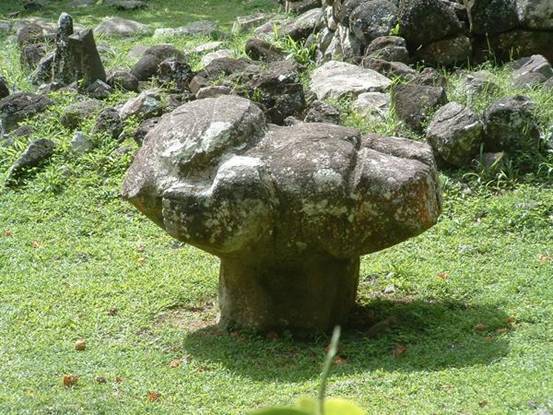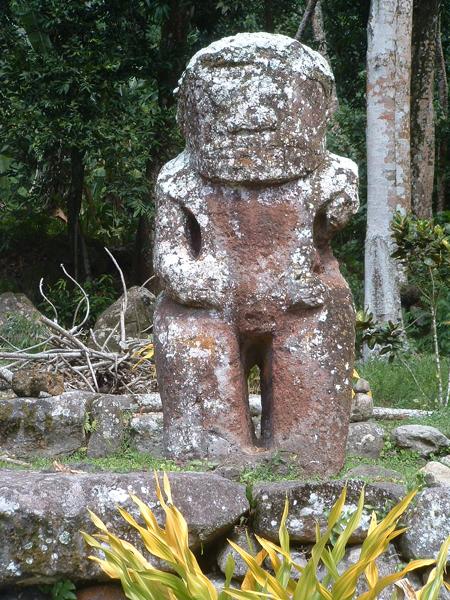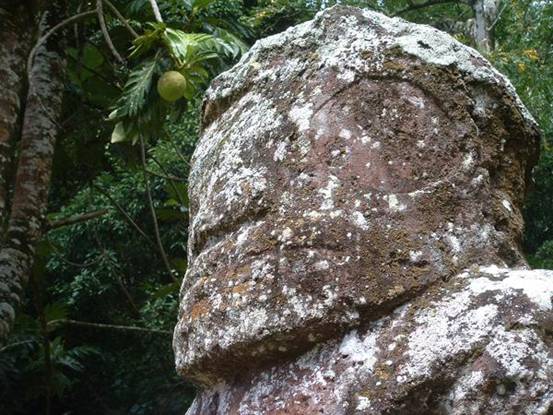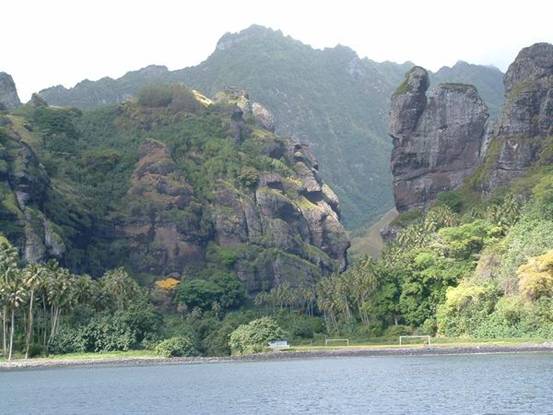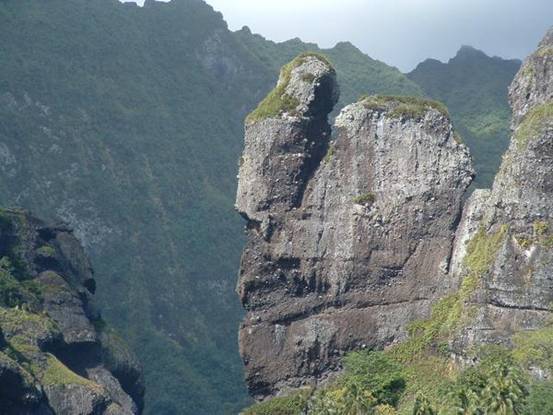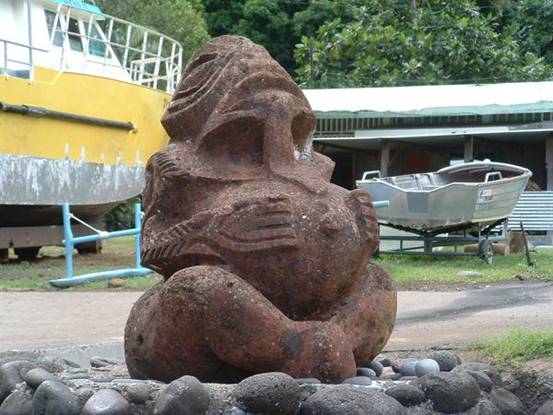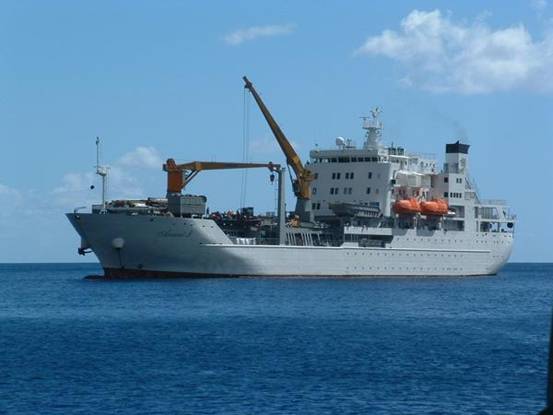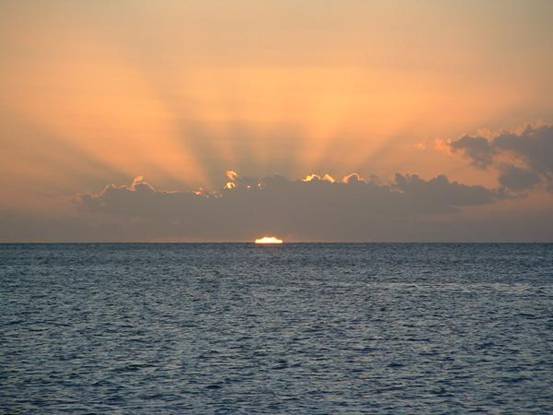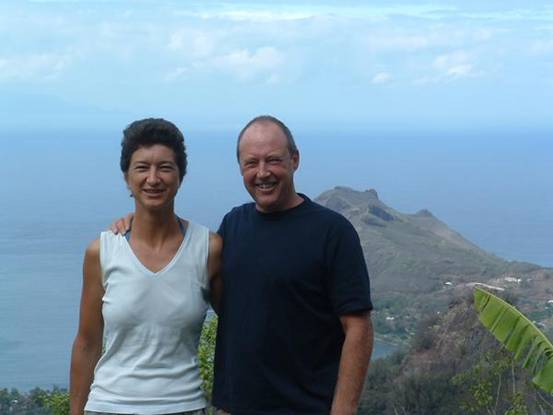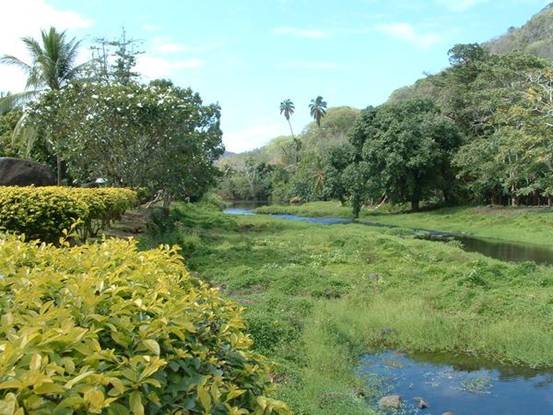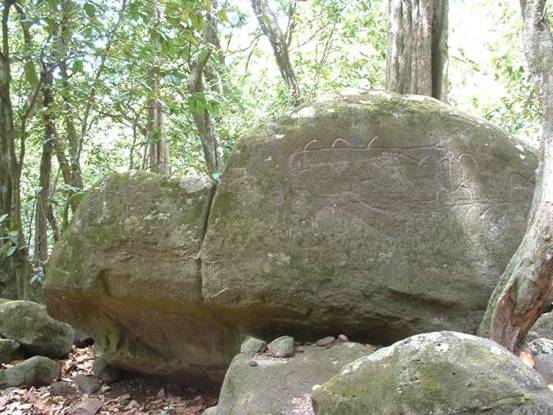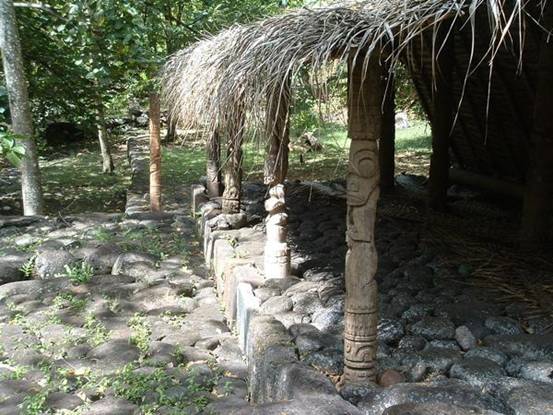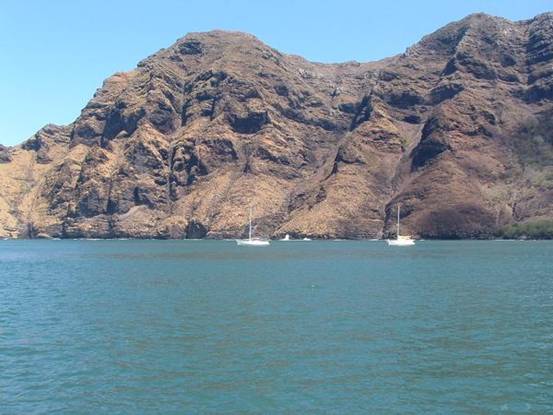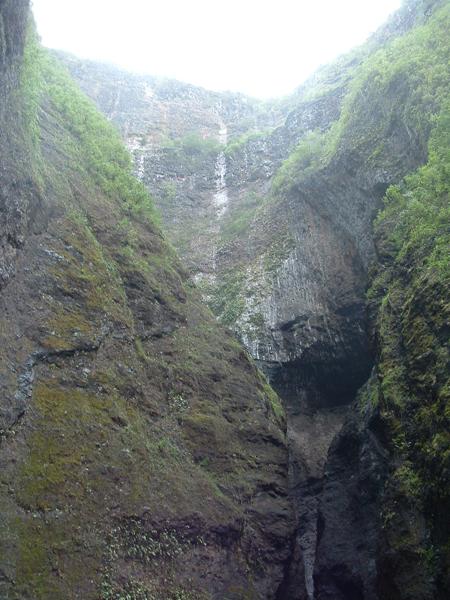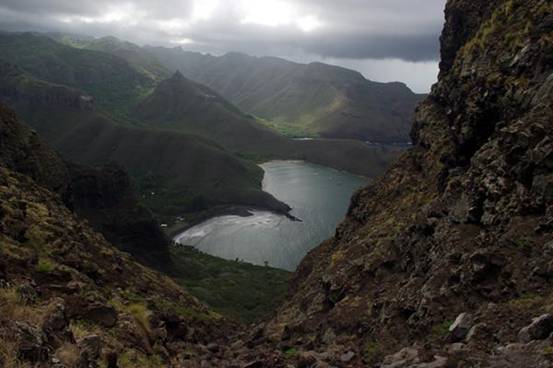FRENCH POLYNESIA - THE MARQUESAS

|
First priorities:- check in with the local authorities, and buy some provisions. You can tell we are back in French territory when the entry formalities are so laid back, particularly for EU citizens. Just go to the local gendarmerie, fill in a simple form and that’s it. No entry fees, no custom dues, no inspection by a variety of officials, no need to tell the authorities every time you want to move on. Oh how different from the Spanish-speaking countries with their love of pointless bureaucracy. Other nationalities have to put up a bond equivalent to the cost of an air fare home, but we can pretty much come and go as we please. Atuona, the main town on
The only other thing of note in
Atuona is the Paul Gauguin Centre. Gauguin finally settled in We met up with a number of boats
that we know from
We decided to hire a car and see
a bit of the island, in conjunction with Chris and
We stopped for a drink in the
café in Paumau, run by the lady who looks after the nearby iipona archaeological
site. She gave directions and off we went again to discover one of the best
preserved archaeological sites in
This Tiki apparently represents a woman
giving birth. Is she smiling or grimacing?
The largest Tiki in
We drove back across the island
and down to the exquisite That evening the four of us decided to splash out on an excellent dinner in a beautiful hotel overlooking the anchorage, served by delightful Polynesian girls; a fitting finale to a great day. Fatu Hiva Next day we sailed the 46 miles south to Fatu Hiva, the most isolated of the Marquesas. We anchored in the extraordinary
Baie des Vierges (
Baie des Vierges, Fatu
Hiva
You make you own mind up as to what these
eroded columns look like
Or?
The net result is another pregnant
Tiki! We took a walk to a local waterfall, managing to get lost in the forest before finding the right track, and watched the whole village practising their traditional dance routines to be ready for the July 14th festivities. It is somewhat bizarre that these Pacific islanders should celebrate Bastille Day with so much fervour, but any excuse for a party. The next day Fatu Hiva was buzzing. The local supply vessel, ‘Aranui 3’ was arriving. She calls about every three weeks with everything the island needs that doesn’t grow on trees. It is a strange vessel, part freighter and part cruise ship, accommodating up to 150 passengers. So not only do the islanders get fresh supplies, but they also have an opportunity to sell the passengers all sorts of local handicrafts, particularly some wonderful wood carving and jewellery. They also laid on a welcome dance, much as we seen at the practice, but now in traditional costume. It is quite extraordinary how the Polynesian women wiggle their hips so fast, especially as some of the hips are very large!
The ‘Arunui 3’, local supply vessel and
cruise ship Our final evening in Fatu Hiva
was spent in company with Chantelle, Freddy and Didier from
Talking of food, one of our friends e-mailed and said it would be nice if Lucy could give a female perspective to the blog. Sorry, but she’s far too busy cooking, washing and cleaning for that. After the ‘excitement’ of Fatu
Hiva we sailed to the neighbouring
Sorry, yet another idyllic
beach
Sorry, yet another Pacific
sunset Nuku Hiva One of the advantages of a really fast boat is that we can do in a day sail what for most boats would be an overnight passage .So the 84 miles to Nuku Hiva were accomplished after an early start by dropping anchor in Taiohae Bay by 4pm. Taiohae is the largest town in the Marquesas, but it’s not that big – about 2,500 inhabitants. A look around town, shopping for provisions and a pizza in the evening were the orders of the day. Next day, Saturday was music festival day, which contained a very mixed bag, from interesting dancing to awful karaoke, followed by a disco that went on till 2 in the morning (I thought we’d left those behind in the Caribbean – must be getting old). On Sunday we had arranged, with some friends, a guided tour of the island. Jocelyn, our guide had lived on the island for 14 years and was hugely knowledgeable, about all aspects of Nuku Hiva life. We traversed the island stopping at the village of Taipivai, where Herman Melville (the author of Moby Dick, for the philistines amongst you) lived for a couple of years after deserting his whaling ship, and then on to the beautiful bay and village of Hatiheu, a favourite of Robert Louis Stevenson (Treasure Island!) I have used a lot of superlatives to describe the Marquesas, but they are truly extraordinary islands – mountainous, verdant, beautiful beaches (as long as you don’t mind the vicious sand flies, known locally as ‘nonos’), and nice, laid-back people. We visited a couple of archaeological sites, which included platforms for human sacrifice (and a bit of cannibalism), and pits in which they held the sacrifices before making a final choice!
View over
See, we are really alive and
well
The river in Taipivai
village
Sacred 600 year old Banyan
tree
The pits in which the human sacrificees were
kept prior to their dispatch!
Turtle rock with ancient petroglyphs of
sharks and turtles
It would appear that every tree produces something useful. Mango and grapefruit abound as do limes and lemons, then add chilli peppers, cocoa, coffee, vanilla, almonds and cashews. Those trees that produce inedible fruit have their uses medicinally. The girls here really do wear a flower behind the ear, but lads be warned – behind the left ear means ‘I’m spoken for, whereas behind the right ear means ‘I’m available’ Another word of warning for those would-be pleasure seekers – there is a tradition among these island of raising one son as a girl, and they continue to live as transvestites in adult life. This continues today, with these flamboyant ‘raeraes’ often serving in hotels and restaurants. A couple more days in Taiohae,
relaxing and boat-maintaining, and then 5 miles to the west to
The third highest waterfall, 600 metres, in
the world; if it was flowing!
Looking down on
Snow Leopard is the most inshore of the four
anchored boats
|


